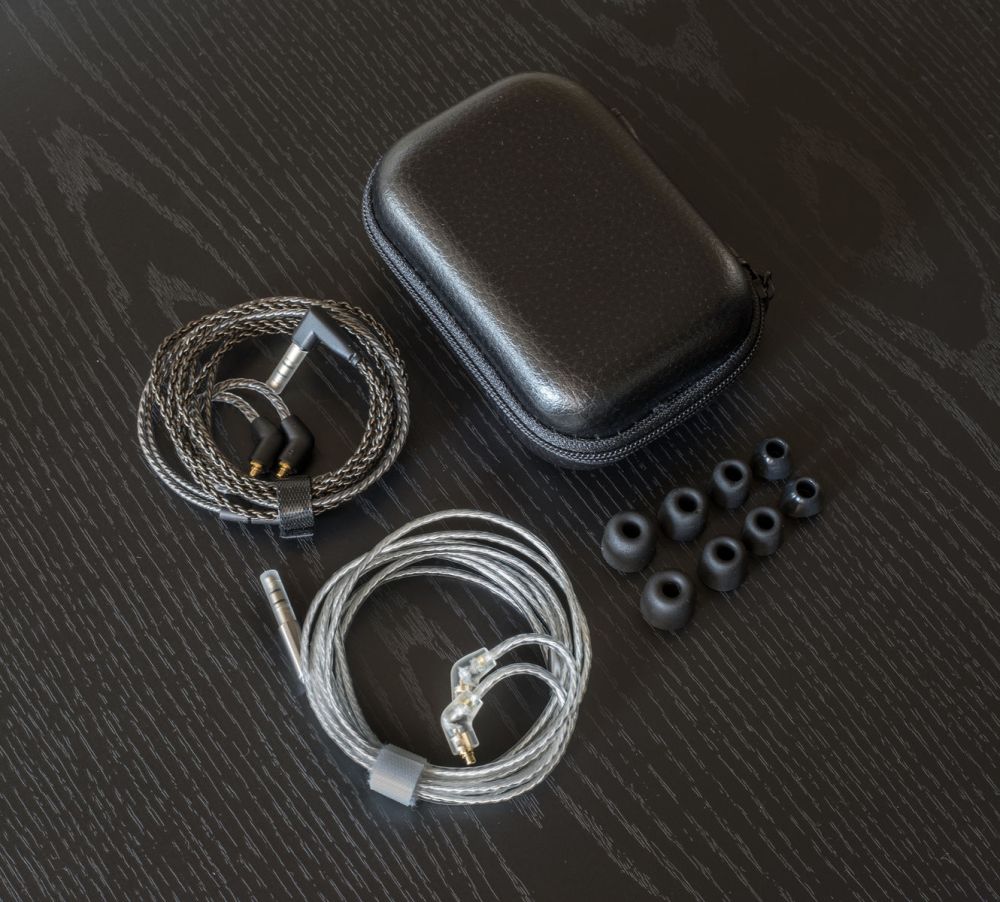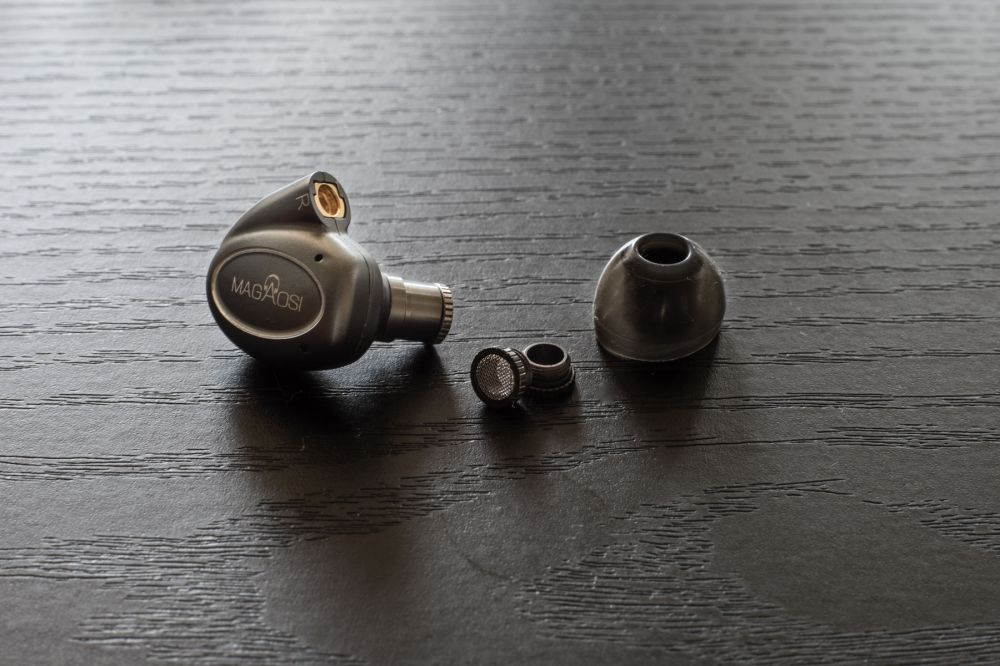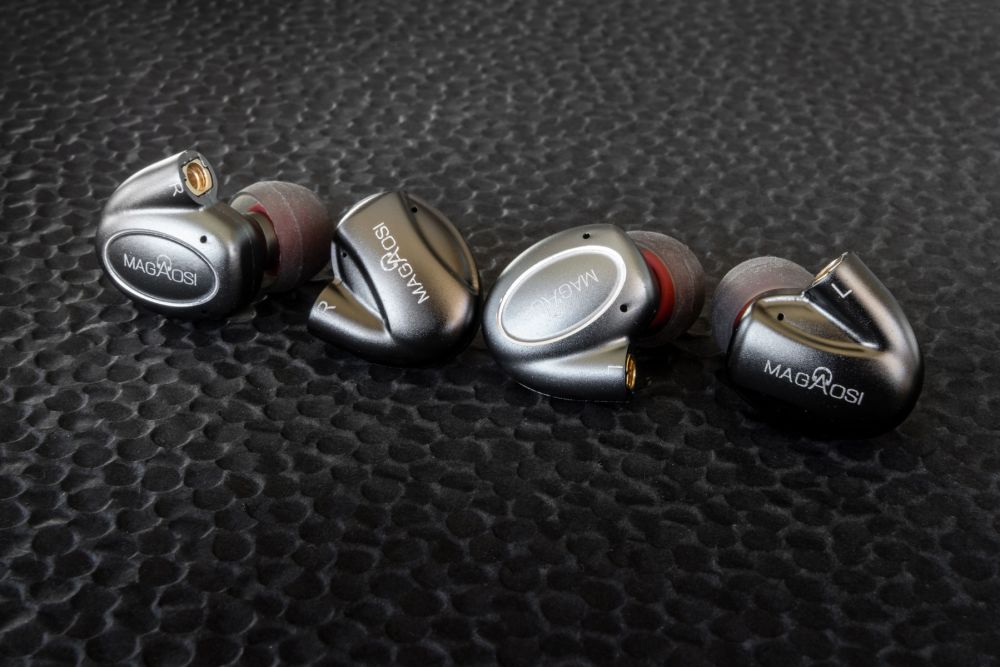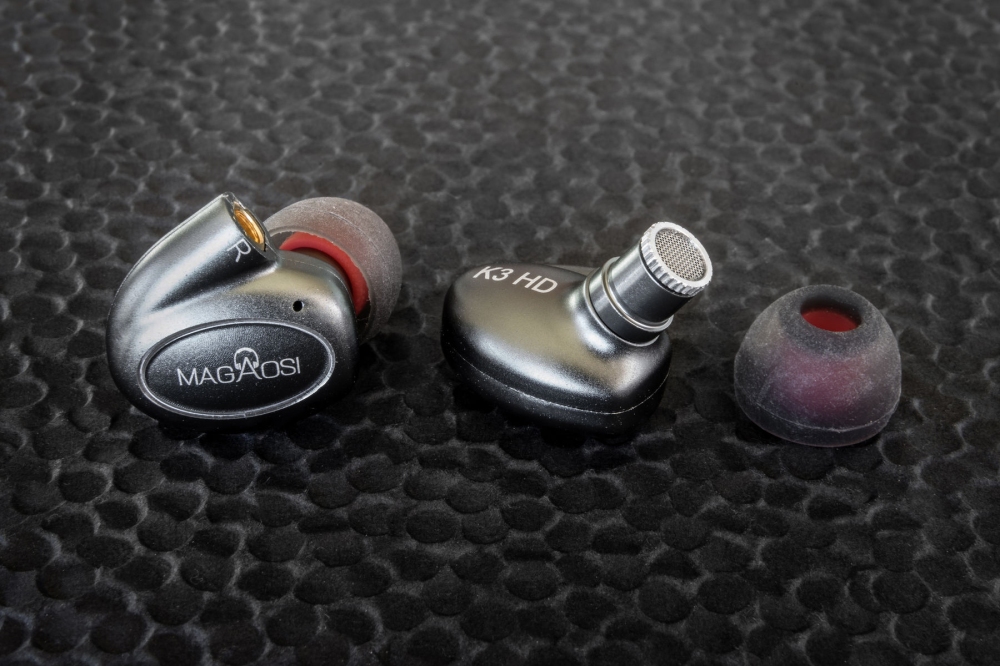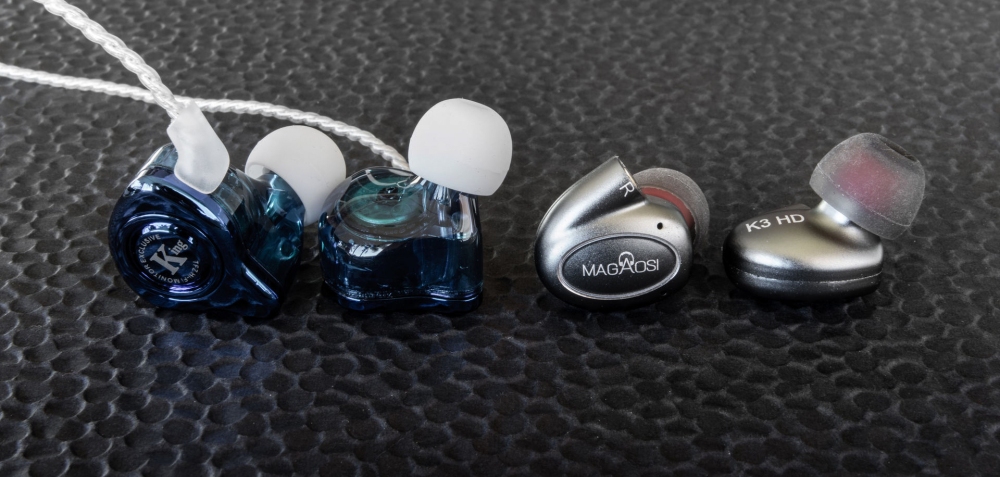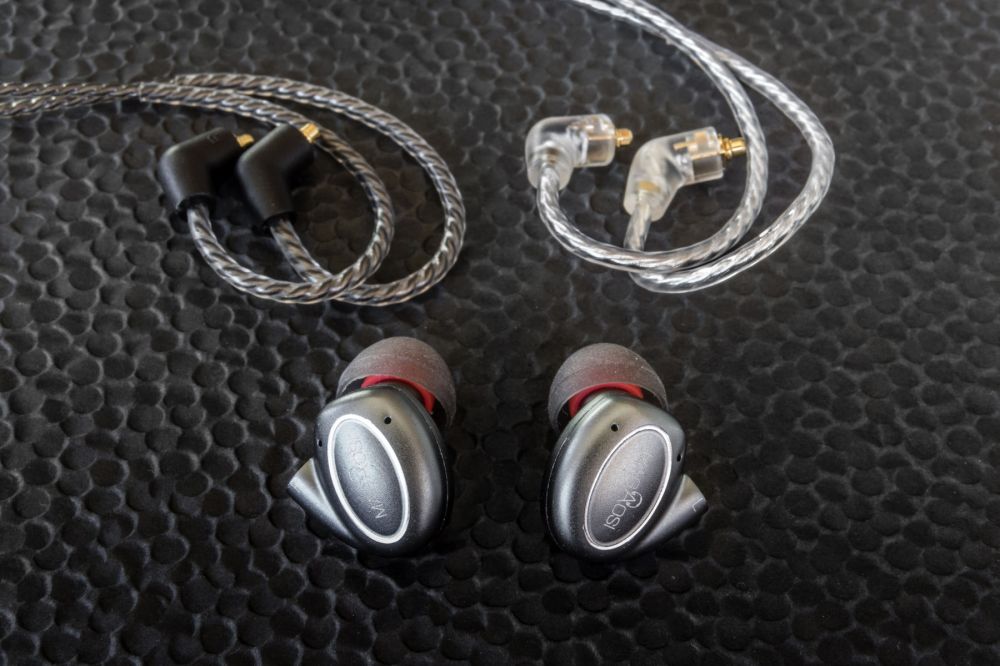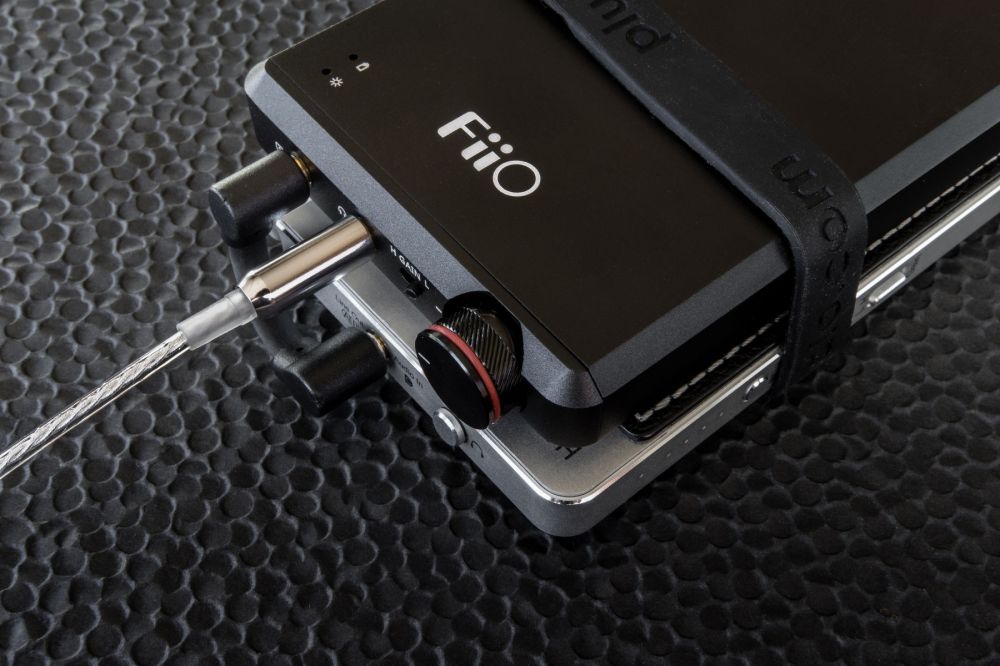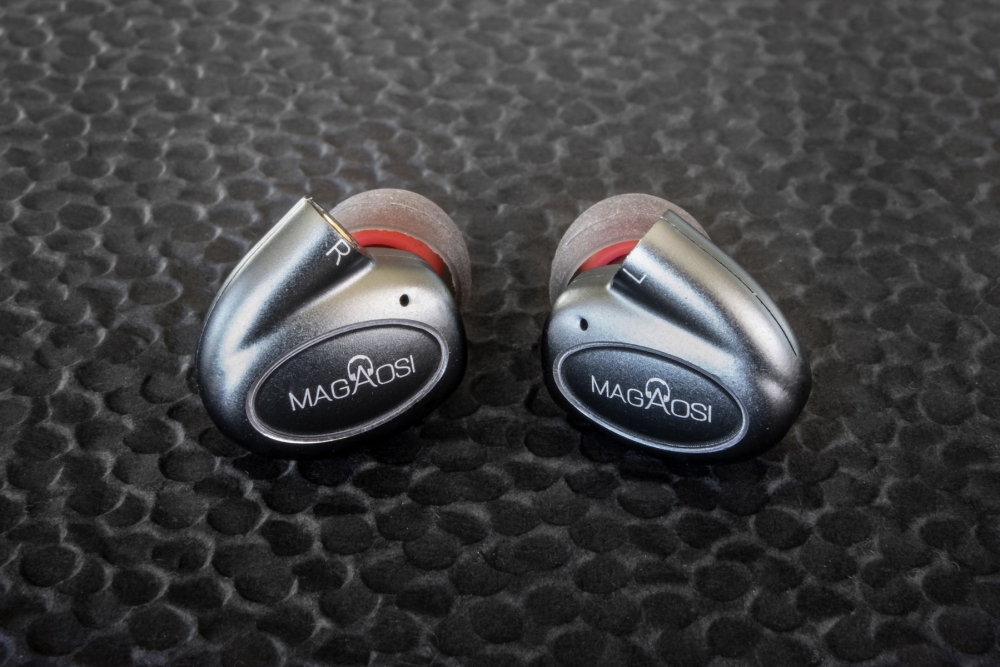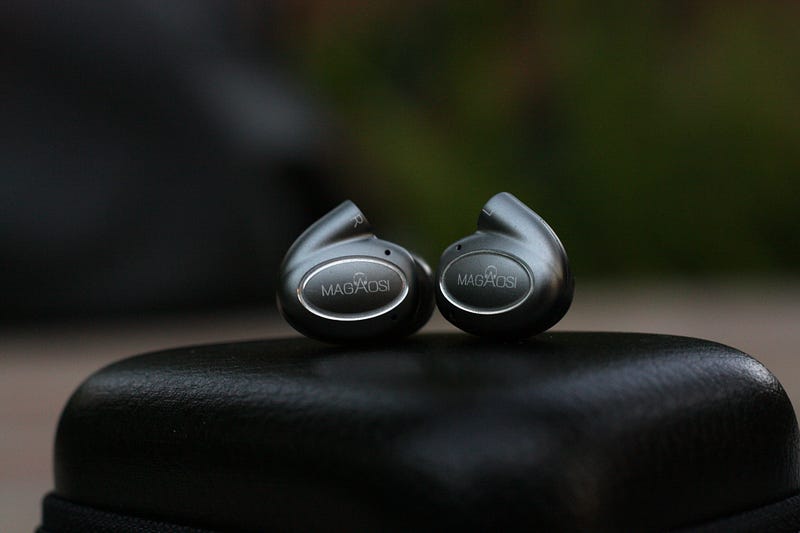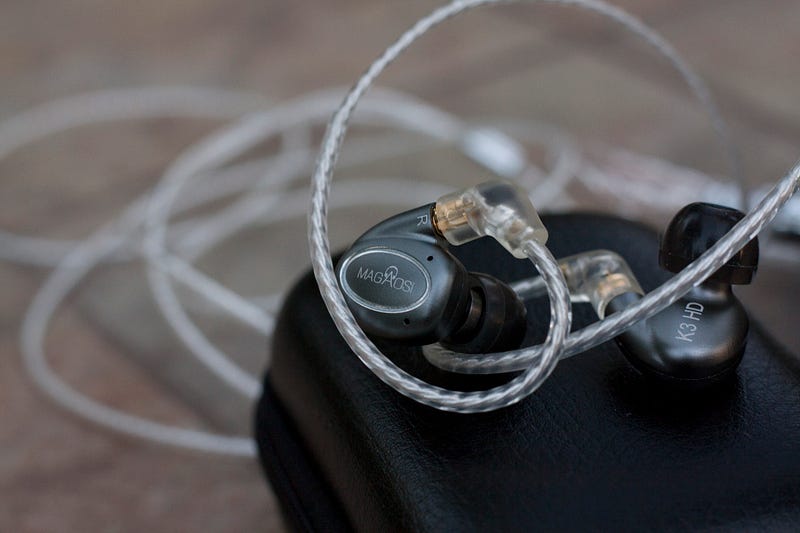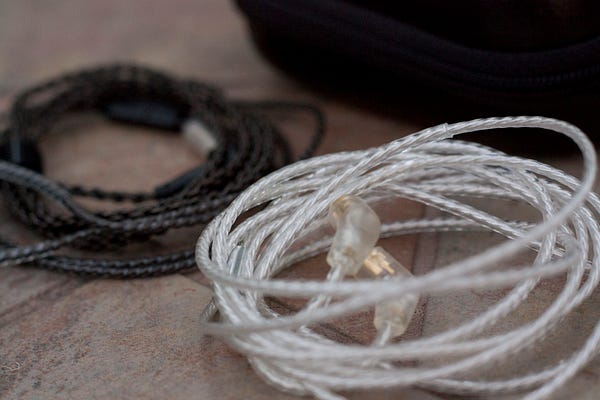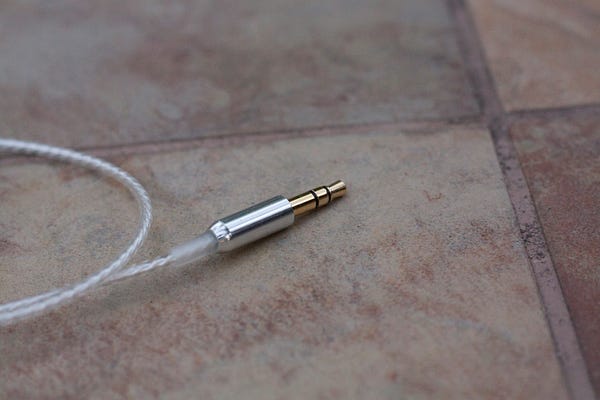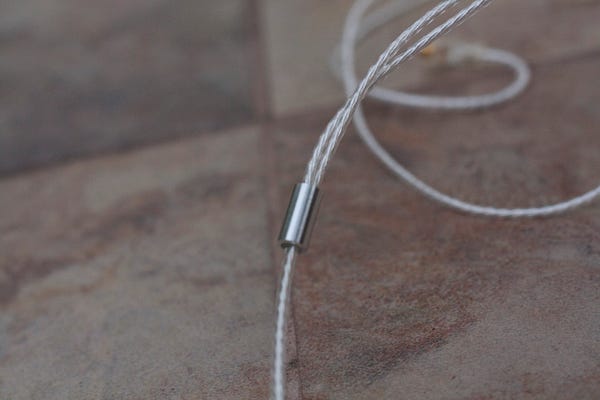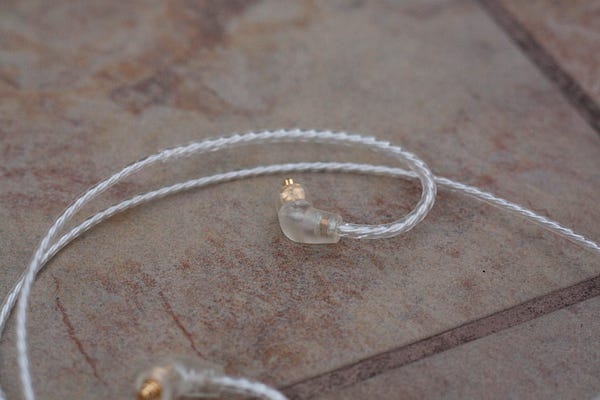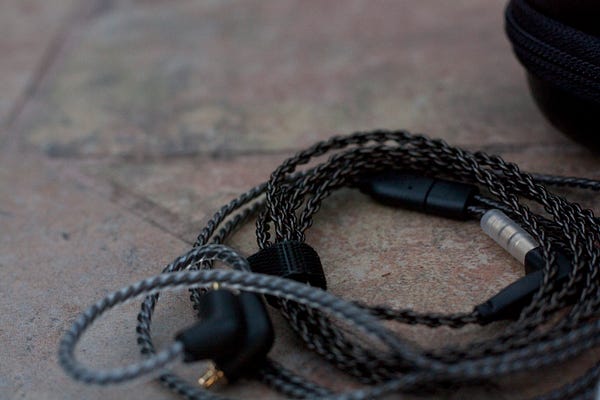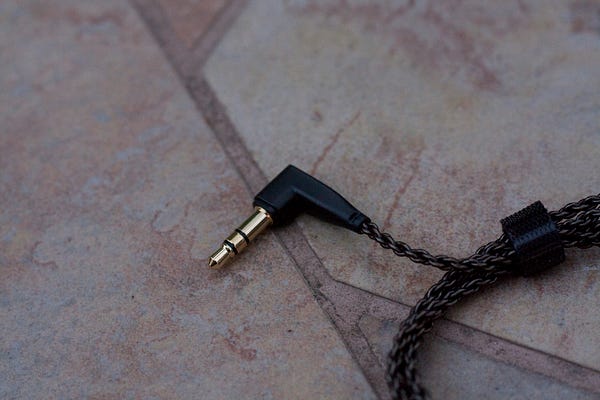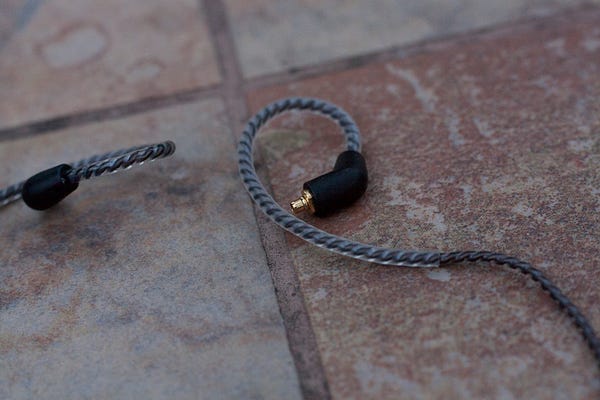
Introduction
Magaosi is another well-known brand located in China. It has multiple series covering a wide variety of prices. One of the most famous series is the K. The model I currently present belongs to it, is the K3 HD, very comfortable and small IEMs, which have a simple hybrid architecture: 1 DD + 1 BA.
The K3 HD start the price range above $100 and this implies a more careful presentation. In this sense Magaosi does not disappoint and includes a meticulous presentation, with quality elements.


Specifications
- Type of Drivers: 1 Dynamic Driver + 1 Balanced Armature
- Frequency Response: 20Hz - 22kHz
- Sensitivity: 99dB
- Impedance: 32Ω
- Channel Difference: ≤2dB
- Maximum Input Power: 10mW
- Cable length: 120cm±5cm
- Jack connector: 3.5mm gold plated
- Capsule Connection Type: MMCX


Packaging
The Magaosi K3 HD come in a large box, wrapped in a cardboard sleeve, white background. On its main side there is a photo of the outer part of the capsules, among other texts. The back shows an exploded view of the inside of the IEMS, as well as their features, specifications and content, both in English and Chinese. Once the cover is removed, a dark box is shown, which can be opened like a book. After doing so, it can be seen that the contents are protected by a transparent, rigid plastic lid. With the help of a handle located at the top, the protector can be removed, exposing a large block of foam protector. In it, are embedded the capsules, 3 pairs of foam tips (SxMxL), a pair of silicone tips (M), with dark channel and translucent exterior. Finally, there is a large transport box, located at the bottom. If the block is removed, the instruction leaflet can be accessed.
The contents do not end here, as the other accessories are included in the excellent zipper cover:
- Two MMCX cables, one copper, braided and the other silver plated, plain.
- Three pairs of red core and dark outer silicone tips, sizes SxMxL
- Two black threaded filters.
The capsules are fitted with large translucent tips and Silver filters.
The presentation is well taken care of, the protection is excellent, as well as the transport box, one of the best I could see in this price range.
It is a good detail to incorporate two cables, but I would have preferred only one of better quality.


Construction and Design
The capsules are made entirely of aluminium of great hardness and minimum weight. There is not much more information about the type of dynamic driver used, as well as the BA driver. What you can see in the exploded view is that the BA driver is located close to the nozzle. This is something that can be seen with the naked eye, when the filters are removed. These filters are threaded. Each pair is a different color: silver and black. Each provides a different pitch, where the differences are expressed in a greater emphasis between 1000Hz and 10,000Hz, for the black filter.
The shape of the capsules is oval and quite flat. The MMCX connection is located at the top. Inside another oval, marked on the outside of the capsule, is the brand. On the inside, the name of the model is written in white letters. The shape of the capsule is not completely regular, as in the area near the nozzles, the edge is flattened to even improve comfort. Close to that edge, on the outside face, there are two small holes. The nozzles are wide (5.8mm) and long (6.8mm approx).
The surface of the capsules is textured, providing a softer and more pleasant contact.
The design looks simple and not unlike other models. But it has several details that make it more original and, above all, more comfortable. In this sense, its size, thickness and weight favor this virtue.


Adjustment and Ergonomics
As I have already pointed out in the previous section, the adjustment is very good. The ergonomics of the K3 HD is one of the strong points of this model. I could even say, what by their reduced thickness, could be used to sleep, as they protrude very little from the ears.
The good ergonomics also favors the use of multiple tips. I have been able to use them with tri-flange, simple silicone and foam tips, and all of them offer an excellent and pleasant fit. But, as I've been saying in the last reviews, I'm using the tri-flange tips, for sound immersion and for greater isolation. Although it is true that it is not the most comfortable option for long listening.
If you are looking for IEMS, prioritizing fit, ergonomics and comfort, the K3 HD are one of the best options within this price range.


Sound
Profile
The profile of the Magaosi K3 HD is in V. But thanks to their interchangeable nozzles, which act as filters, the frequency response can be modified. This modification is noticeable between 1kHz and 10Khz.
With the Silver filters, the tendency is to a V, but with the highest media more neutral. With them, the K3 HD, are warm, with a greater predominance of the lower zone. They also have a point of greater darkness, although they are more balanced and, in my opinion, pleasant. With the black filters, there is a very clear gain, which can reach up to 6dB, between 4kHz and 5Khz. In my opinion, this filter takes the mid zone out of control, making it more aggressive, too much for my taste.
The ideal would have been a filter just in the middle, so the balance would have been much better.

Bass
If one isolates oneself mentally, the lower zone is perceived in the same way with both filters, since their response is the same. The lower zone has a clear predominance, from its middle part onwards. However, the sub-bass decays quite rapidly below 50Hz. This point limits the extension of the range, but also prevents hearing fatigue, allowing longer use. Be that as it may, the hit of the mid-bass makes us forget this relative deficiency, since its power is perceived, and enjoyed, with clarity. In terms of resolution, detail, speed and definition, the K3 HD are simply good, but not much further. This feature provides a feeling of even greater warmth, as it is also accompanied by some darkness. To a great extent, all these aspects, condition a good part of the sound of the K3 HD. At first, this sound polarization can cause some surprise, even something negative, if you don't expect it. But with the passing of time, it's easy to get carried away by the pleasant mist of the low notes, while tasting the rest of the details of the other ranges.
In short, the Magaosi K3 HD, have a bass that are appreciated with the passage of time, more, even, in long sessions, without technically being the best in the range. But they have a color and a texture that makes them quite attractive.


Mids
With the black filters, the K3 HD are shot in high mids. Listening, for my personal taste, becomes less comfortable, as the greater presence in this sensitive area, crisps the sound. It is true that there is greater brightness, clarity, even detail. But the use of this filter accentuates too much the character in V of the K3 HD, losing part of its attractiveness. I must say that this is a personal appreciation based on my own tastes, here I am not being objective.
With the silver filters, the mids are somewhat more trimmed than desirable, but I find them much more balanced, within the warm profile of the whole. It is true that the profile is still in V, but now the tendency shifts to the lower part, but in a more relaxed way, without the imbalance is perceived as blatant.
Thus, the voices have a rather soft and pleasant timbre, more natural and, above all, less forced, more analogical and exciting. Darkness is also revealed, but not as a lack of transparency, but as that absence of final brightness, due to the cut that these filters make. It is absolutely clear that there are no wheezing or hissing voices.
Another curiosity of the K3 HD is that despite their V-character, the voices are not embedded, quite the opposite. They're not in the foreground, but they're perceived closer than farther away. This is due to the fact that the bass has that foggy character, which floods the sound in a wide way, with a depth that, rather than muddying the voices, accompanies them and sometimes pushes them forward, especially the masculine ones. I think that on this occasion, the positioning of the drivers has an influence on this particularity.
Instruments do not have the same treatment as voices and it is true that they are perceived more or less close, depending on their main tone. For example, guitars have a tendency to sound a little farther away than voices, as they strike around the gain valley.


Treble
The K3 HD, with black filters, offer their greatest gain around 5kHz. This incidence is very noticeable and can be somewhat irritating to some listeners. The sound with them is really crunchy, there's no doubt about that, but also somewhat focused. With the silver filters, the peak is totally filed, starting the highs in a more relaxed way, but also trimmed (the difference is more than 5dB). Black filters offer more treble extension, although their tendency is downward. But as they start from a higher gain, the extension is kept above the sound offered with the silver filters. When the highs reach 10kHz, the curve of both filters comes together.
Again, the choice of filter will depend on our tastes. But the differences in this range are still large. A third intermediate filter, more neutral, would have balanced so much polarization in both profiles.


Soundstage, Separation
The lower zone of the K3 HD causes a liquid sensation, which floods the sound, expanding it in width, as if it were a dark background. On that mantle, navigates the rest of frequencies, sometimes very superficially, others clearly above. Filters help to make that difference.
In this way, the scene is perceived as moderately wide, but not very high or deep, which limits its definitive expansion. The scene sensation improves with a more powerful font. It follows that the K3 HD, require some extra power, to provide an improved response.
As it could not be otherwise, the clarity, separation, resolution and level of detail, increase as you raise frequencies. It is when entering the BA territory that these parameters take off, standing out against the fluid background. Even so, the details remain infected by the persistent warmth of the dark magma, which weaves all the sound of the K3 HD, especially with the silver filters. But it is strangely contagious, to perceive as the definition of the nuances, jumps over the patina of the lows, offering an almost remarkable level.


Comparisons
Dunu DN-1000
Reference classic hybrid model. The profile of the DN-1000 is also warm, but with more power in the lower zone, especially in the sub-bass, generating greater depth in the sound. The definition in that band is greater, as is its precision, in contrast to the foggy bass of the Magaosi.
The tone of the voices is very similar, with the silver filters. Although they still seem a little darker and more veiled in the DN-1000. While in the K3 HD, they have more sparkle and clarity, which makes them feel closer and more intimate, especially the female voices.
The upper zone of both IEMs has a similar extension, but the greater presence of the initial part, in the K3 HD, gives the sound more detail, life and intelligibility. Although the Dunu seem to have a better balance, despite their comparative shortcomings, as they do not sound in V as the Magaosi.
The greater depth of the DN-1000 provides more sound planes, giving it greater height and three-dimensionality. At the level of separation, for the same reason, you can see more resolution in the Dunu. But there is an extra brightness in the K3 HD, which provides more nuances than in the Dunu.
Dunu are heavier in the ear. Magaosi require more power to match volumes.

Anew U1
The Anew U1 are single DD. Their profile is also in moderated V. The mids are somewhat irregular, as you can see in their graph. However, they have, in general, quite good definition. Starting with its lower zone, it has greater authority, resolution, level of detail and more sub-bass presence. Its texture is also better, more realistic, without that foggy feeling. The Anew are perceived lighter, if that glimpse of darkness that the K3 HD do show. Male voices are more vivid and dynamic, too. Although the K3 HD, they present them with greater warmth and a thicker body, feeling thinner in the U1. At the level of detail, above, is when the Magaosi win the game to the Anew, offering more micro details and nuances. Although, later, the highest zone is very similar.
In scene and separation, given the improved clarity in the Anew, it is perceived greater than in the Magaosi.
The Anew U1 is easier to move than the Magaosi K3 HD. The U1 have larger and less comfortable capsules than the K3 HD, whose ergonomics and comfort are very difficult to beat.

Conclusion
The Magaosi K3 HD are the IEMs that have the shape, size and ergonomics that many people claim: they are small, quite flat, the fit is almost excellent, their weight is very light and their touch is pleasant. You can also choose between three bright colours: grey, blue and orange. The presentation and accessories are above their price, providing one of the most appropriate transport boxes I have seen. Its sound is perfect for those who want to buy their first IEMs, in this price range: They have a V profile whose emphasis can be modified, thanks to its filters. In this way, the K3 HD, can be adapted to personal taste. The basses are powerful and surprising. Their sound is warm, pleasant, with a point of darkness, but detailed and with a good level of definition and nuances. But its best feature is that its sound becomes more revealing the more you use it.


Sources Used During the Analysis
- Burson Audio Playmate
- Fiio Q1
- Sabaj DA3
- F.Audio XS03
Ratings
- Construction and Design: 90
- Adjustment/Ergonomics: 91
- Accessories: 85
- Bass: 80
- Mids: 75
- Treble: 75
- Separation: 75
- Soundstage: 70
- Quality/Price: 80


Purchase link
https://penonaudio.com/Magaosi-K3-HD
You can read the full review in Spanish here:
https://hiendportable.com/2019/07/28/magaosi-k3-hd-review/


































